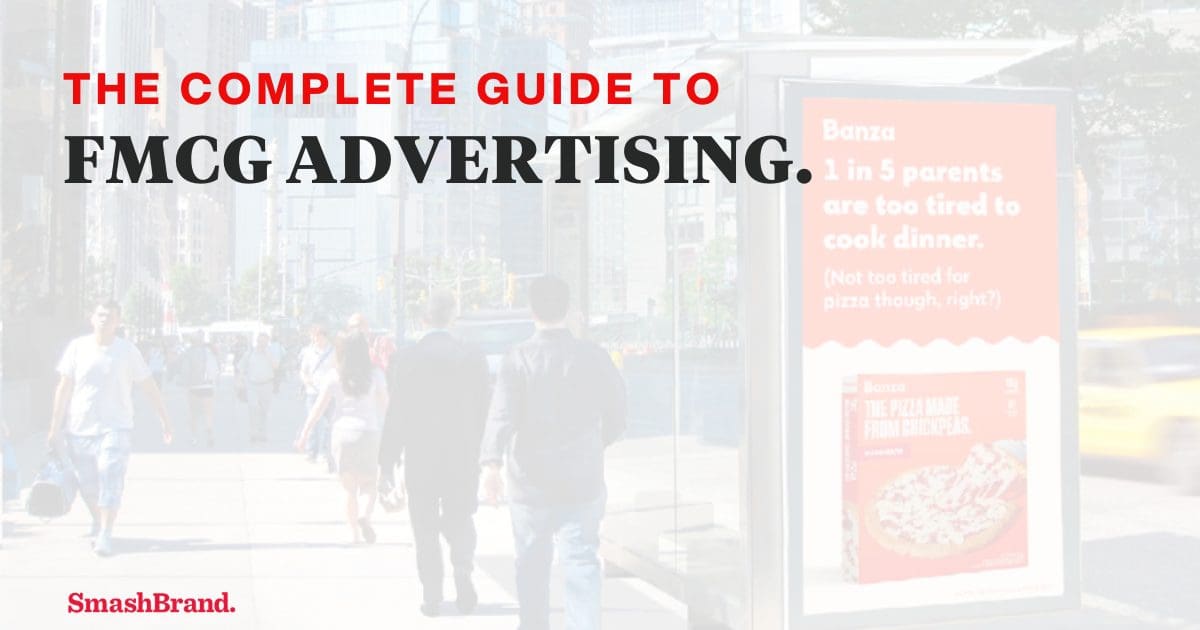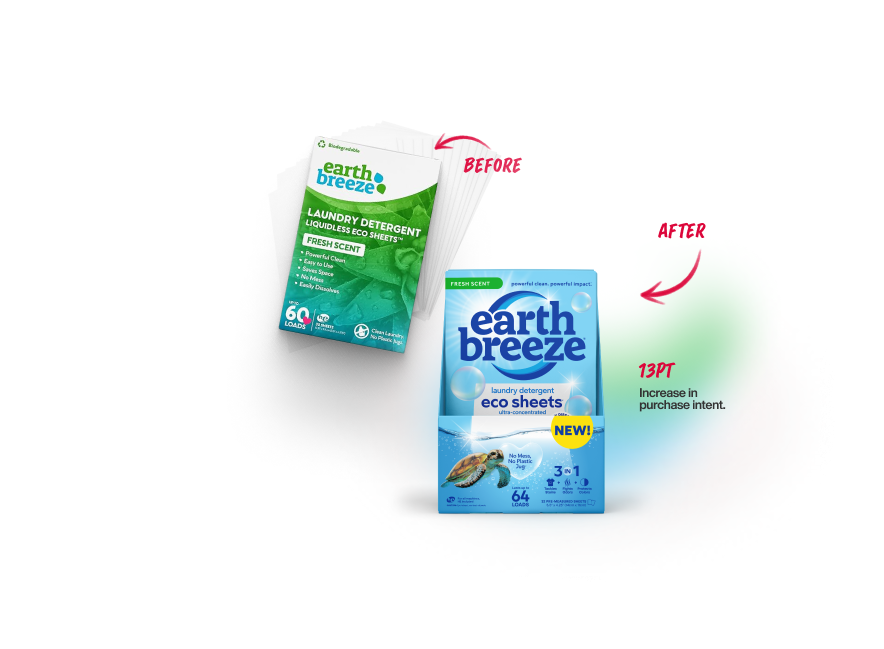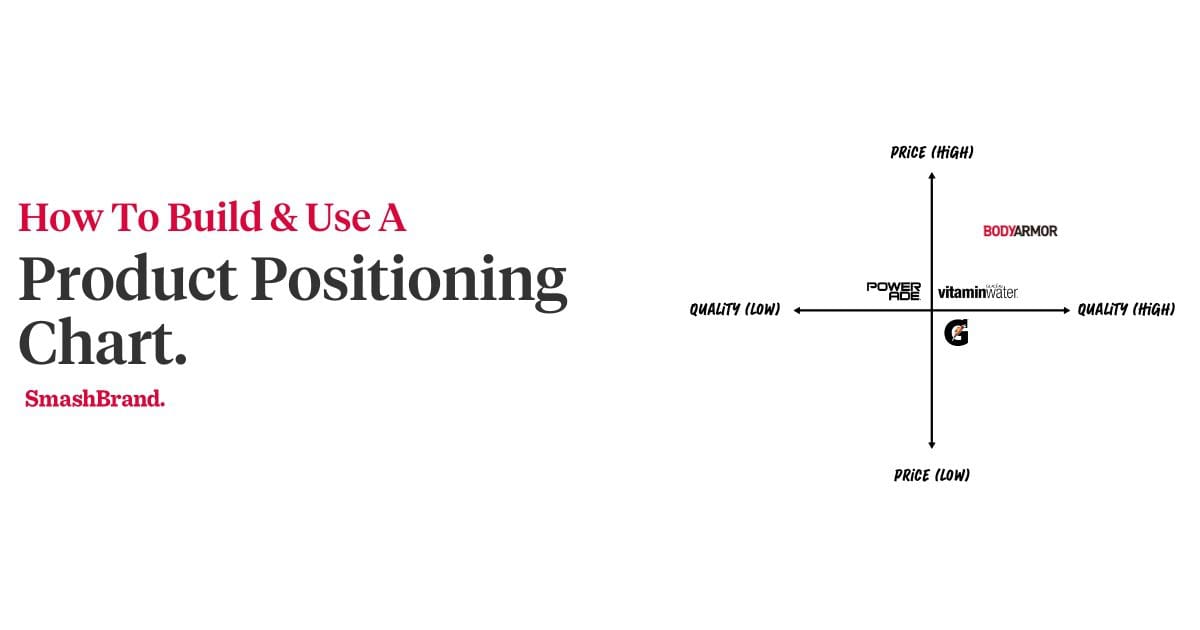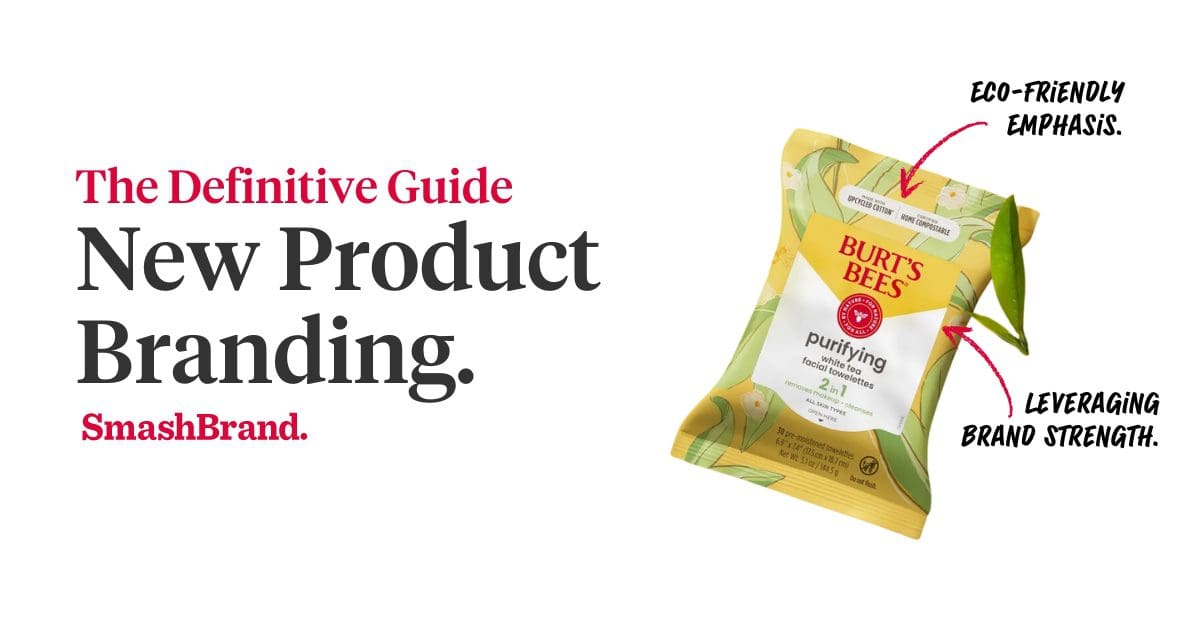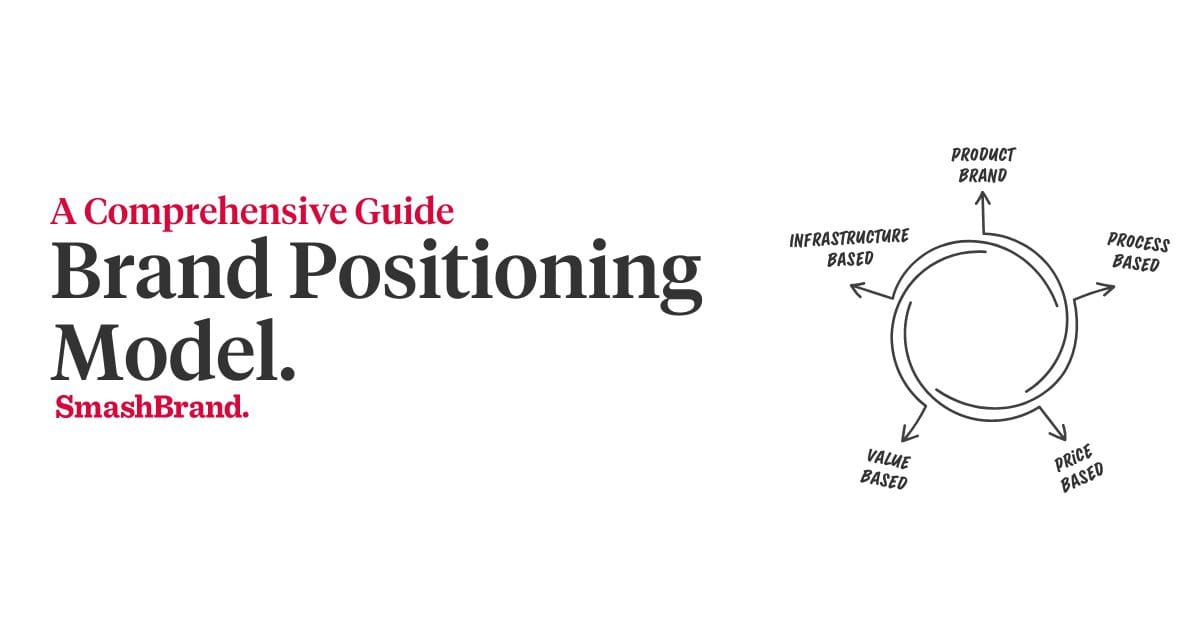Listen to This Article


Did you know the global FMCG industry will reach $15.3 trillion by 2025? That staggering statistic presents plenty of opportunity to capture this market share. But how do brands stand out in a crowded market with so many options available to consumers?
The answer lies in effective advertising and marketing. Successful FMCG companies spend roughly 15 – 20% of their revenue on advertising as they understand it is critical to their success.
In this complete guide to FMCG advertising, we’ll explore the latest trends, strategies, and best practices for creating memorable campaigns that drive sales and build brand loyalty. Whether you’re a marketing professional or simply curious about FMCG advertising, this guide has everything you need to know to stay ahead of the competition.
Get your Hands on the SmashReport!
And enter to win a FREE brand diagnosis worth $20,000.
*The SmashReport is a monthly newsletter for FMCG and CPG brands, helping them stand out in the competitive retail marketplace.
The Role of FMCG Advertising
Branding and marketing are essential to running a successful business in the FMCG sector. The following are some of the main benefits of advertising:
Building Brand Awareness
Advertising campaigns are the backbone of creating strong brand awareness within the FMCG sector. It refers to the recognition and familiarity consumers have with a particular brand. FMCG brands use various advertising channels, such as TV commercials, online ads, billboards, and social media promotions, to gain visibility and attract the attention of potential customers.
Creating a Strong Brand Identity
An FMCG brand strategy agency leverages the power of colors, fonts, typography, and imagery to convey a visual message to the target consumers. Dunkin Donuts is an excellent example of brand awareness; consumers can easily recognize the brand through the pink and orange letters.
A branding agency may utilize various advertising channels to create a strong brand identity, including social media such as Facebook, TikTok, Instagram, Threads, or X (formerly known as Twitter).
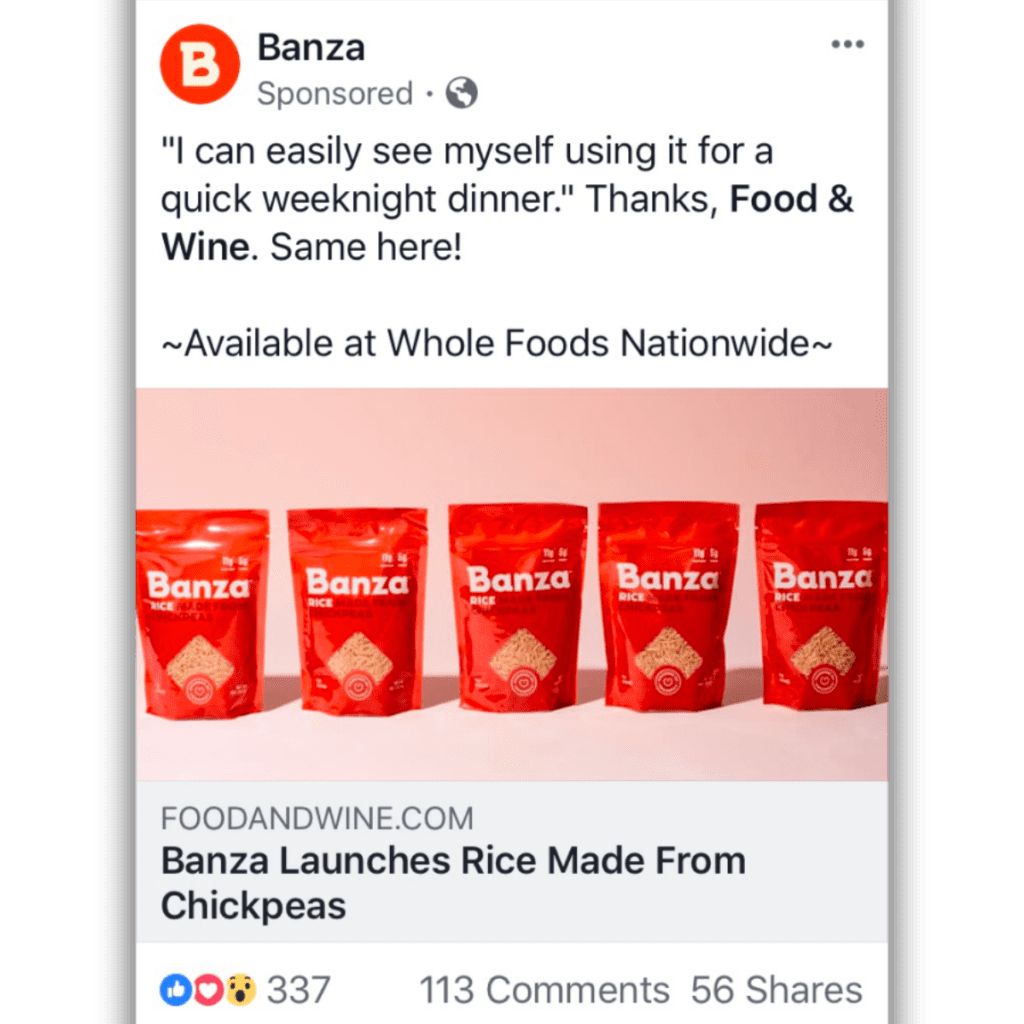

Driving Consumer Demand
FMCG marketing strategies are constantly optimized to drive consumer demands and influence consumer behaviors. Driving consumer demand through unique marketing initiatives, as we see from brands such as Liquid Death, can generate significant sales with the same investment as other brands.
Connecting With Consumer Behaviors
A successful FMCG branding agency will always strive to develop a sense of trust and loyalty while tapping into the desires and aspirations of the target consumers. FMCG brands can leverage the power of motivation and inspiration to tap into the consumer’s desires. L’Oreal’s “Because you’re worth it” campaign aimed to inspire women to feel confident and beautiful in their skin. These campaigns help build trust and eventually result in brand recognition and loyalty.
Targeting and Segmentation In FMCG Advertising
Targeting and segmentation are essential elements of an effective FMCG marketing strategy for consumer packaged goods companies. By leveraging data-driven insights and consumer research, FMCG brands can tailor their advertising messages to reach their desired audience and resonate with their specific needs and preferences. This approach enables FMCG companies to create successful advertising campaigns that deliver measurable results and drive brand growth.
Consumer Demographics And Psychographics
When conducting FMCG market research, understanding consumer demographics and psychographics is crucial. It allows brands to discover the latest FMCG trends and understand whether or not they will work for their brand.
Demographic data such as age, gender, income, and education information allows an FMCG agency to optimize its marketing campaigns better to align it with the market needs. For instance, a brand selling snacks can target college students and set their pricing according to the income level of students.
Demographics and psychographics yield necessary information, allowing brands to tailor their marketing messages to their audience’s needs and preferences.
Tailoring Advertising For Targeted Audiences
Understanding the demographics and psychographics is paramount for understanding the target audience and their preferences. Using this data, FMCG advertisers can tailor their advertisements to the target audience.
An advertisement campaign that is niched according to consumer preferences helps attract more potential customers. Various digital platforms such as Facebook, Pinterest, and TikTok play a vital role in such advertisements. These platforms allow FMCG brands to reach their target audience more efficiently.
Traditional Advertising Channels
Before social media, traditional marketing methods of FMCG advertising were at their peak. These methods mainly comprised television commercials, print media, and advertisements on the radio. Before digital FMCG merchandising was available, brands had to rely on traditional methods to communicate with their target audience and gather insights into their needs. However, advertising campaigns demand accuracy, which needs data.
Digital FMCG merchandising has revolutionized how brands connect with their customers, providing them with a wealth of data that marketers can use to improve their marketing campaigns.
For instance, a TV commercial may engage a specific group of people, but there is no way for companies to see how many monthly conversions they have gained via ads.
Digital Advertising Channels
Modern advertising channels provide helpful information such as customer acquisition data, demographics, and psychographics.
Companies analyze this data carefully and optimize their FMCG retail strategies according to the latest trends. Let’s look at some of the most effective means of digital advertising.
- Website Advertising: Companies utilize websites to promote their products. Websites use different types of advertisements, such as banner ads, sidebar ads, in-content ads, and even videos.
- Social media marketing: Social media channels are also highly effective for promoting FMCG products. Companies can use TikTok, Snapchat, Instagram, Facebook Pages, and groups to build a strong audience for their brand.
- Influencer collaborations: Businesses can collaborate with popular social media influencers to gain access to their followers and potential customers. It may involve sponsoring their posts or offering them free products or services.
- Search engine optimization (SEO): SEO allows companies to bring traffic from search engines to their products. It is one of the most effective ways of dominating search results and overcoming the competition.
- Brand collaborations: Collaborating with a non-competitive brand is a trending way to drive consumer demand in and out of your target market. This strategy is working extremely well for many FMCG brands.
Integrated Marketing Campaigns
FMCG companies can create a cohesive marketing message that resonates with their audience and drives brand growth through multiple channels, such as social media, email marketing, and search engine optimization.
Coordinating offline and online efforts is crucial in creating a seamless customer experience. FMCG companies can coordinate their offline and online efforts using consistent branding and messaging across all channels. It helps to create a seamless shopping experience for customers. For example, a customer may browse a product online and purchase it in-store.
By working with integrated retailers, FMCG companies can create a consistent brand experience across all channels and improve customer loyalty.
FMCG Advertising Strategies
Various FMCG marketing strategies help promote products and build a strong customer base and a solid brand presence. However, implementing these strategies involves multiple steps.
Let’s discuss some of the main factors when implementing a successful FMCG branding strategy:
Consumer Behavior And Psychology
FMCG companies must understand consumers’ decision-making when purchasing their products to create effective marketing campaigns. The consumer decision-making process consists of five stages: need recognition, information search, evaluation of alternatives, purchase decision, and post-purchase evaluation.
These brands must also understand each stage of the decision-making process and tailor their marketing messages accordingly. For example, a company may use social media influencer marketing to create awareness and generate interest in their product during the information search stage.
Brand Positioning And Differentiation
Brand positioning refers to a company’s unique position in the target audience’s mind. By creating a solid brand positioning, FMCG companies can impact consumer perceptions and drive brand growth.
An FMCG packaging design agency must think creatively when designing packaging. A unique ad campaign doesn’t require product images to build brand positioning.
For instance, Powell Peralta, one of the famous skateboarding companies, launched an ads campaign to promote their skateboards in the 1980s. The company didn’t use any skateboard images. Instead, they focused on graphics and illustrations. It helped the company stand out from the crowd and boosted their sales.
Creativity And Storytelling In FMCG Advertising
Storytelling is a powerful tool that can create an emotional connection between the brand and the consumer. Using storytelling techniques such as character development, conflict, and resolution, FMCG companies can create memorable and impactful advertisements that resonate with consumers.
For example, a company may use a storytelling technique to highlight their product’s origin story or to showcase their effect on people’s lives. Similarly, a company may use humor to create memorable advertisements that resonate with consumers. Moreover, nostalgia or cultural references can also emotionally connect with the target audience.
Geotargeted FMCG Advertising
Advertising FMCG products in diverse cultural contexts requires careful consideration of cultural sensitivity and localization strategies to ensure effective communication with target markets. Cultural differences can impact consumer behavior and perceptions, and FMCG companies must consider these differences when developing advertising campaigns.
For example, a popular product in one country may be less prevalent in another due to cultural differences. An FMCG Agency must adapt advertising messages to the local culture and language to communicate effectively with the target market.
Cultural sensitivity involves understanding cultural differences and avoiding offensive or insensitive advertising messages. Using localization strategies and cultural sensitivity, FMCG companies can create effective advertising campaigns that resonate with their target audience.
Measuring Success In FMCG Advertising
Every marketing campaign must be monitored to measure its effectiveness. There are multiple methods to determine the impact of an advertising campaign and calculate profitability. Let’s discuss and understand some metrics that help measure the success of FMCG advertising campaigns.
Key Performance Indicators (KPIs)
Key performance indicators are various metrics to monitor a company’s sales revenue and overall market share. A company may use these metrics to track its monthly and yearly goals.
Moreover, KPIs help determine the brand awareness of an FMCG company. For instance, a company may track audience engagements to measure the growth of a social media handle. Performance indicators also help optimize FMCG pricing strategy and packaging design by tracking and observing consumer preferences.
Return On Advertising Investment
ROI is a valuable metric to monitor when measuring the success of a fast-moving consumer goods marketing campaign. It helps companies to measure the FMCG ad spend vs. the total revenue generated.
Achieving a higher ROI is the ideal marketing goal: getting the most profit from your investment. Marketers analyze both traditional and digital advertising expenditure data to calculate ROI.
Analyzing Advertising Metrics
Advertising metrics analysis is the key to tracking consumer engagements. Furthermore, it allows companies to adapt their strategies based on data-driven insights.
FMCG brands can utilize data such as click-through, conversion, and engagement rates to determine consumer engagement and response to their advertisements.
It allows better-optimized ad strategies and improves the overall ROI. Data-driven marketing strategies remove the guesswork from the process and help run effective campaigns that consume fewer resources and bring better results.
Ethical Advertising Practices
Transparency, authenticity, and social responsibility are critical components of ethical advertising practices, and they can significantly impact brand reputation and consumer trust.
FMCG companies can build credibility with their target audience by being transparent about their products. For example, companies may disclose information about their products, ingredients, or manufacturing processes to demonstrate transparency and build trust.
Similarly, FMCG companies can create a genuine connection with their target audience by being authentic in their advertising campaigns. For instance, a brand may show the results of its products in advertising campaigns to promote its authenticity.
A recent report by Label Insight, a company that collects and analyzes food label data, found that 94 percent of consumers would be more loyal to brands that practice transparency, while 56 percent claim that brand transparency would make them “loyal for life.”
Label Insight (NIQ)
Future FMCG Advertising Trends And Challenges
The FMCG market is rapidly evolving, and FMCG companies must adapt to changing consumer behavior, technological innovations, and ethical considerations to remain competitive.
Here are some future FMCG advertising trends and challenges:
- Competition and clutter: With many brands vying for consumer attention, standing out in the crowded marketplace can take time and effort. FMCG companies must develop creative and impactful advertising campaigns to cut through the clutter and capture the attention of their target audience.
- Adapting to changing consumer behavior: As consumers become increasingly digital-savvy and socially conscious, FMCG companies must adjust their advertising strategies to meet these changing needs.
- Innovations in technology: Innovations like virtual and augmented reality can also provide new opportunities for FMCG companies to engage with their target audience.
- Embracing sustainability: Consumers are becoming more socially conscious. FMCG companies that embrace sustainability and ethical advertising practices can build a positive reputation and establish long-term relationships with their target audience.
Conclusion
FMCG advertising is crucial to running a successful business within the FMCG sector. These campaigns allow companies to build a solid brand presence and drive consumer demand.
Running a successful ad campaign for fast-moving consumer goods requires targeting and segmentation. It helps to tailor advertising messages to a specific group of audience. Furthermore, companies must diversify their ad tactics by utilizing traditional and modern advertisement methods.
As consumer behavior evolves, FMCG companies must adapt their advertising strategies to meet changing needs. Innovations in technology, such as virtual and augmented reality, present new opportunities for engagement. Moreover, embracing sustainability and ethical advertising practices can enhance brand reputation and foster long-term relationships with socially conscious consumers.
Data-Driven Brand Development For FMCG Brands
SmashBrand is a brand development agency for FMCG and CPG companies. From brand strategy to packaging design testing, our Path To Performance™ process guarantees a retail performance lift. Book a time to discuss your project with our team.

